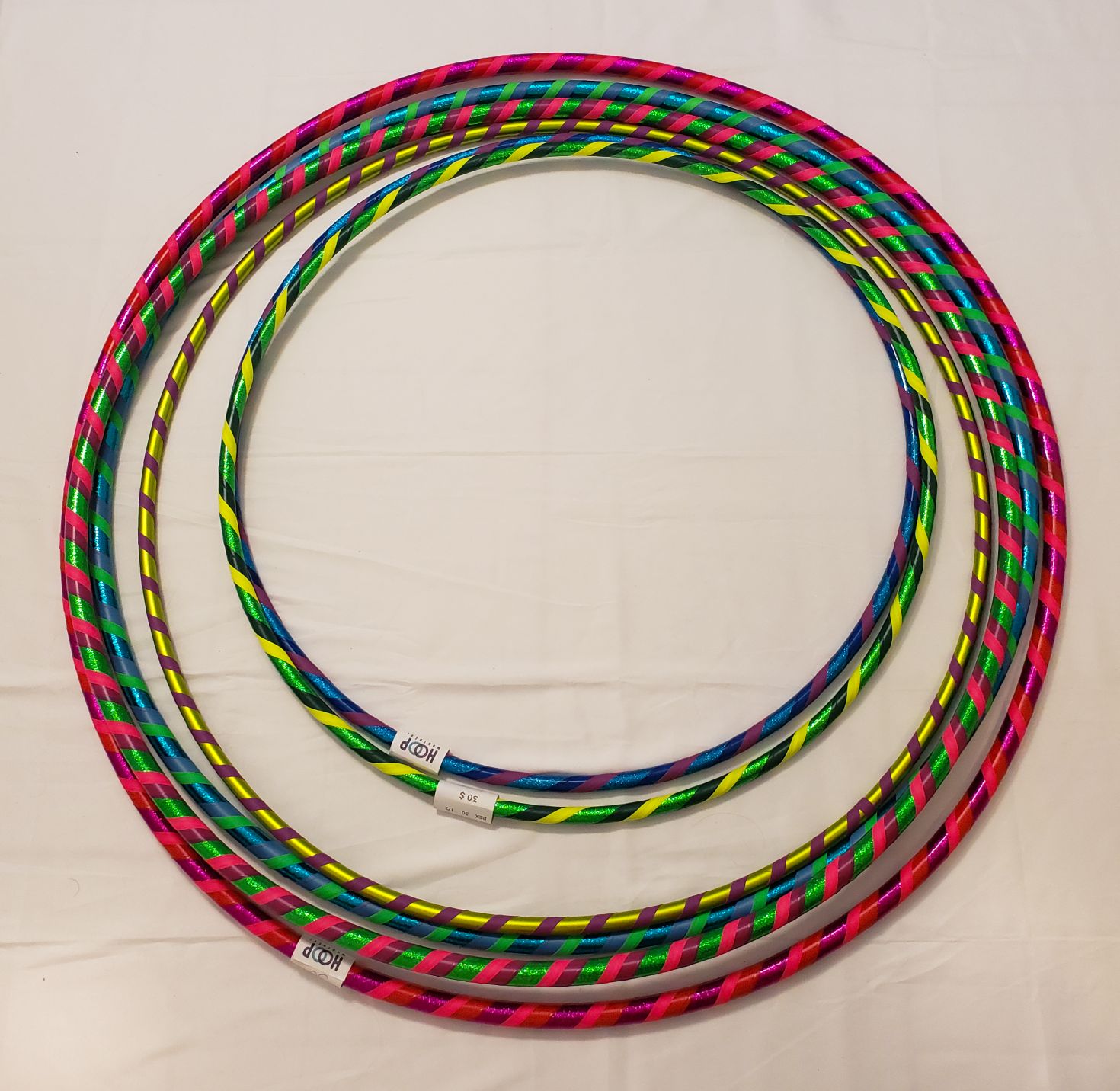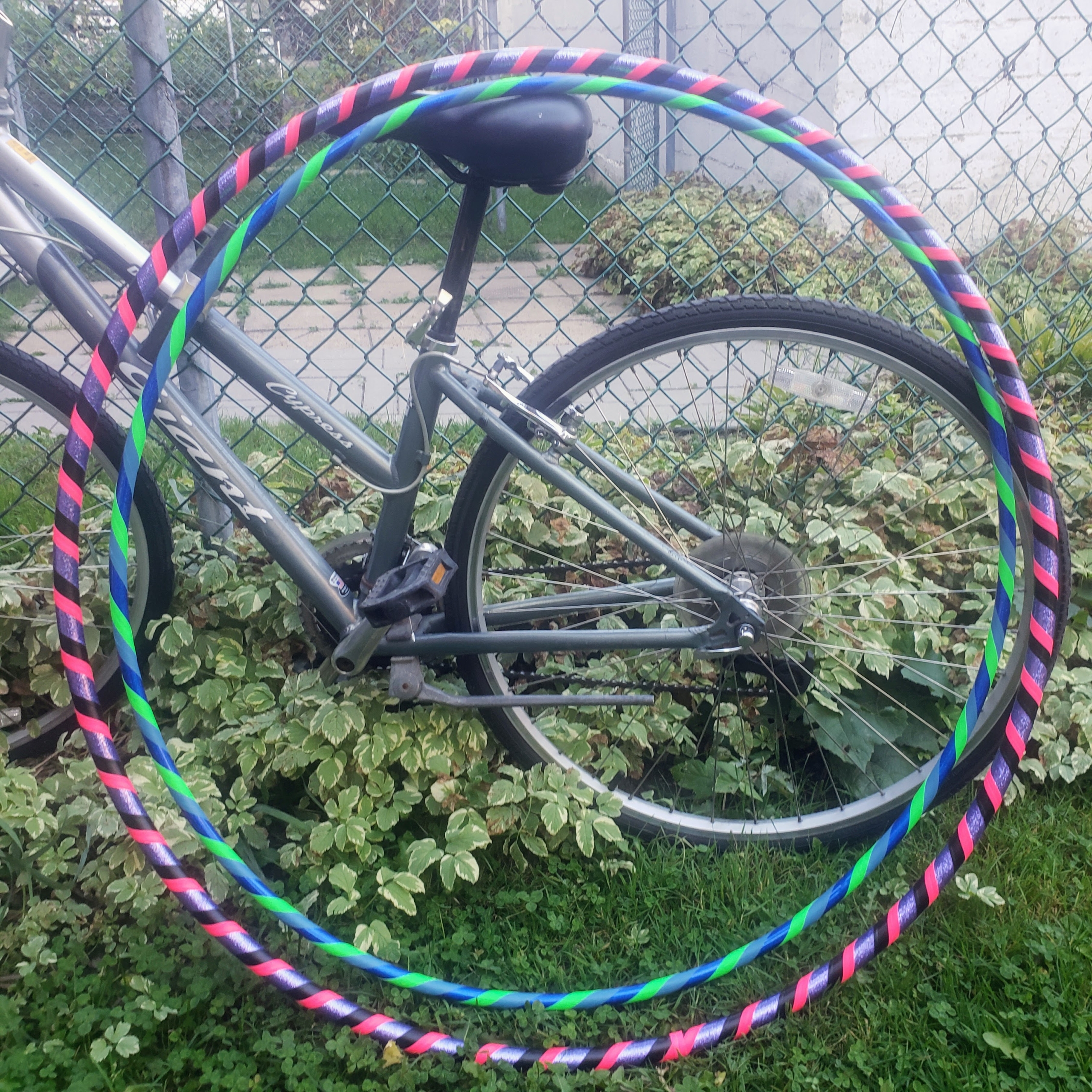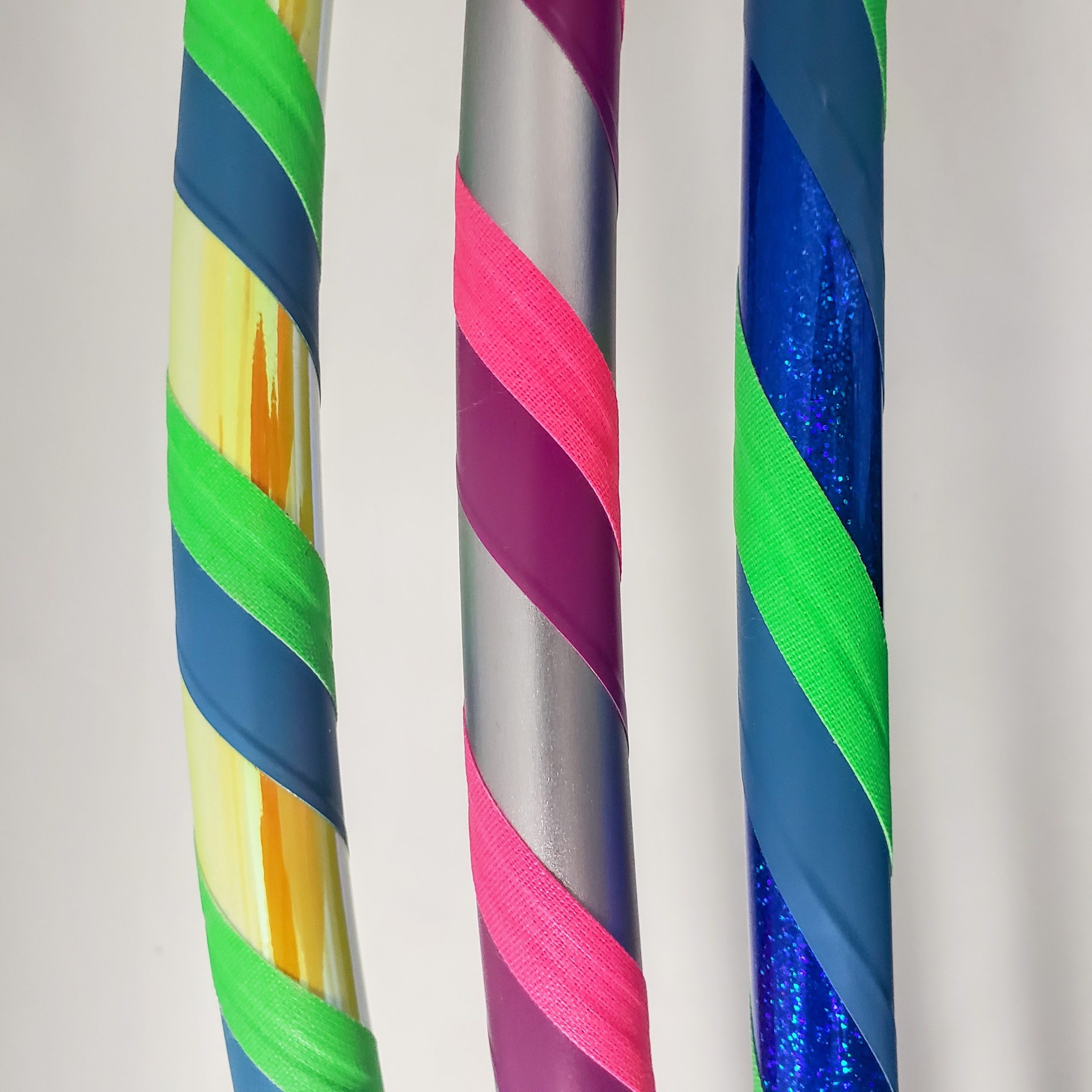It is (at first) easier with a large one!
Contrary to popular belief, it’s easier to successfully spin around the waist with a large hoop than a smaller one. A larger hoop, because usually also heavier, rotates less quickly, which facilitates learning. Thus, most on body movements and transitions (waist, knees, hips, chest, neck) are easier to learn with a larger hoop.
A smaller, lighter hoop spins faster, and offers less time to place the body and learn movement. It is very difficult for most beginners to learn on body hula hoop with a small, light hoop, such as a 5/8″polypropylene (polypro) hoop, probably the most popular type of hoop on the market, or worse, with a hoop from a big box store.
But there is so much more to do with a hoop!
Off body movements are those where the hoop is handled with the hands, thrown, etc. For this kind of techniques, a smaller and lighter hoop is better because it is easier to control and less tiring for the arms. So, the best thing when you want to learn hula hooping is to have several hoop sizes at your disposal, like in a hula hoop class.
Should you really choose just one?
Two sizes of PEX hoop are suitable for a large majority of beginners: a small hoop with a diameter of 36 inches (91 cm) made with 5/8 or 3/4 inch tube, or a large hoop of 39 inches (99 cm) diameter made with 7/8 inch tubing. Because being a heavier material, hoops made of PEX are often recommended for starting hula-hooping, especially for larger hoops. For smaller hoops, 5/8″ PEX or 3/4″ polypro are both a good choice, being of a similar weight (choose a polypro hoop if you plan to do Off Body).
As we have already said, the ideal is to have both sizes! But if you really must choose, the smaller 36″ hoop is the best compromise from the moment you can successfully turn it at the waist. Many people need a heavier hoop like a PEX 39″ or 42″ to get there. Taller or more massive people tend to need larger hoops to learn, but not always, like a larger hoop may be needed for someone small to learn. Indeed, an important factor to consider is his physical condition, his natural or learned skills, the level of knowledge and control of his body, and his general coordination. For example, someone who dances will likely find it easier than average to learn hula hoop and a small hoop will likely be their best choice.
If you’ve ever had a hula-hoop around your waist successfully, go with a 36 inches hoop!
Our small beginner hoops (select size 36″):
Our large beginner hoops:
- Large PEX Hoop (select size 39 “)
- Large Collapsible PEX Hoop
- Sectional PEX Hoop
Unless…
Because they are very light and generally smaller, we do not recommend polypro hoops for beginners, unless you are a circus artist, very talented, or know that you want to do exclusively off body movements. In this case, a 5/8″ polypro hoop is a better choice:
Also, it is easier with grip tape!
For beginners, it is highly recommended to use a hula hoop with grip tape. Read our Grip Story post to learn more about grip tape.




